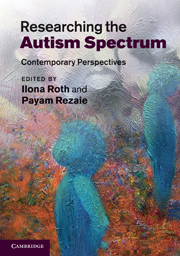Book contents
- Frontmatter
- Contents
- Preface
- Foreword
- List of Contributors
- Introduction
- Part I Classification and Diagnosis
- Part II Genetics, Neurology and Biochemistry
- Part III Cognition, Development and Education
- 7 Psychological models of autism: an overview
- 8 Cognitive flexibility in autism: a social-developmental account
- 9 Language in autism spectrum disorders
- 10 Memory in autism: binding, self and brain
- 11 Measuring executive function in children with high-functioning autism spectrum disorders: what is ecologically valid?
- 12 Autism spectrum disorders in current educational provision
- Index
- Plate section
- References
7 - Psychological models of autism: an overview
Published online by Cambridge University Press: 04 February 2011
- Frontmatter
- Contents
- Preface
- Foreword
- List of Contributors
- Introduction
- Part I Classification and Diagnosis
- Part II Genetics, Neurology and Biochemistry
- Part III Cognition, Development and Education
- 7 Psychological models of autism: an overview
- 8 Cognitive flexibility in autism: a social-developmental account
- 9 Language in autism spectrum disorders
- 10 Memory in autism: binding, self and brain
- 11 Measuring executive function in children with high-functioning autism spectrum disorders: what is ecologically valid?
- 12 Autism spectrum disorders in current educational provision
- Index
- Plate section
- References
Summary
Autism is currently defined in terms of a core set of behaviours, including difficulties in social reciprocity and communication, and limitations in behavioural flexibility. In the past three decades, considerable efforts have been directed towards understanding the neurocognitive atypicalities that underlie these core behaviours. This chapter provides an overview of the major theoretical accounts of autism, especially the theory of mind hypothesis, the executive dysfunction hypothesis, and weak central coherence theory, each of which has aimed to explain autism in terms of a single underlying cognitive atypicality. Some of the reasons why researchers have become dissatisfied with these so-called ‘single-deficit’ accounts as explanatory models of autism will be analysed, before turning to more recent ‘multiple-deficits’ models to begin the task of outlining the additional challenges faced by such models. The chapter concludes by stressing the need to situate explanatory accounts of autism – single or multiple-deficit models – within a developmental context.
Introduction
Since the seminal experimental work of psychologists such as Hermelin and O'Connor (1970) and Frith (1970, 1972), considerable research efforts have been directed towards elucidating the psychological mechanisms underpinning the behavioural manifestations of autism spectrum disorder (hereafter ‘autism’), including the often profound difficulties in social reciprocity and communication, and stereotyped, repetitive interests and activities. Historically, in the interests of parsimony, researchers focused their efforts on isolating a single primary cognitive deficit that could provide a unifying explanation for the constellation of symptoms that are unlikely to co-occur by chance (Morton and Frith, 1995) (see also Rutter, 1968; 1983).
- Type
- Chapter
- Information
- Researching the Autism SpectrumContemporary Perspectives, pp. 219 - 265Publisher: Cambridge University PressPrint publication year: 2011
References
- 9
- Cited by



